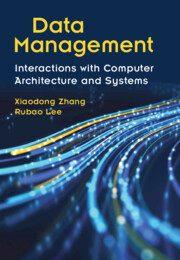
- Cited by 2
-
Cited byCrossref Citations
This Book has been cited by the following publications. This list is generated based on data provided by Crossref.
Shi, Min Peng, Peng Zhou, Xu Liu, Jiayu Xiao, Guoqing and Li, Kenli 2024. Connectivity-Oriented Property Graph Partitioning for Distributed Graph Pattern Query Processing. Proceedings of the ACM on Management of Data, Vol. 2, Issue. 6, p. 1.
Ovcharenko, Olga and Lian, Xiang 2025. Reproducibility Report for ACM SIGMOD 2024 Paper: 'CAFE: Towards Compact, Adaptive, and Fast Embedding for Large-scale Recommendation Models'. p. 66.
- Publisher:
- Cambridge University Press
- Online publication date:
- November 2024
- Print publication year:
- 2024
- Online ISBN:
- 9781009122115


